Carvalhal and Mafra, Portugal – September 2013
Just as we were leaving Óbidos a few days earlier, Monika briefly met Patrick Cipriano, a young Portuguese who had been born in Switzerland. He was a tour guide and stopped his van, telling his clients he just had to take a picture of our truck.
After our restless night in Sintra, he found us again and spontaneously invited us to his parents’ house, just a small detour on the way to Cabo da Roca, our next destination. We accepted and followed him in his Portuguese 4X4 UMM. It turned out to be a wonderful opportunity to spend some time with a Portuguese family. When we arrived Patrick’s mother, Gracinda, was already preparing dinner. Monika took time to wander through the large garden, vineyard and orchard with Patrick’s father, Avelino.
Patrick was busy with tourists the next day so Avelino and Gracinda were gracious enough to take us to the National Palace in nearby Mafra. The so-called Palace is a monumental Baroque and Italianized Neoclassical palace/monastery. It was built during the reign of King João (John) V (1707–1750). The vast complex is among the most sumptuous Baroque buildings in Portugal and one of the biggest buildings constructed in Europe in the 18th century.
When the flow of gold from the Portuguese colony of Brazil started to arrive in Lisbon in abundance, the King continued to enlarge the plans for the palace. He appointed a German goldsmith, Johann Friedrich Ludwig, as his architect. Ludwig had studied architecture in Rome and knew contemporary Italian art. King John V’s immense wealth allowed him to be a generous patron of arts.
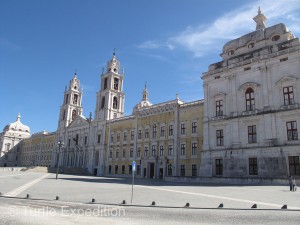
The National Palace in Mafra is a monumental Baroque and Italianized Neoclassical palace/monastery. It was built during the reign of King John V (1707–1750), one of the biggest buildings constructed in Europe in the 18th century.
As we walked through the maze of rooms and halls, the size and complexity was on an equal to St Paul’s Cathedral in London. The facade is 220 meters long (722 ft.). Covering over 40 000 m², (430,556 sq ft), the whole complex is one of the largest palaces in the world, with about 1,200 rooms, more than 4,700 doors and windows, and 156 stairways. The building also includes a major library, with about 40,000 rare books. The basilica is decorated with numerous Italian statues of incredible detail and includes six historical pipe organs and two carillons, composed of 92 bells.
Construction lasted 13 years and mobilized a vast army of workers from the entire country (a daily average of 15,000 but at the end climbing to 30,000 and a maximum of 45,000), under the command of António Ludovice, the son of the architect. In addition 7,000 soldiers were assigned to preserve order at the construction site. There was even a hospital for the sick or wounded workers. A total of 1,383 workers died during the construction. No mention is made of how they ate, slept or went to the bathroom??
One must be amazed by the fact that this spectacular structure was designed and built without the use of a computer. Perhaps more amazing, the National Palace in Mafra is not among the many World Heritage Sites in Portugal.
Later we walked around the resort beach town of Ericeira and stopped for an expresso at one of the many cafés.
Our visit with the Ciprianos gave us a much-needed quiet place to park for a couple of days.
- Avelino and Gracinda Cipriano were gracious hosts, giving us a special opportunity to spend some time with a Portuguese family.
- The National Palace in Mafra is a monumental Baroque and Italianized Neoclassical palace/monastery. It was built during the reign of King John V (1707–1750), one of the biggest buildings constructed in Europe in the 18th century.
- The monks living in the monastery lived a Spartan life. Their bed had a groove in the center to accommodate the spine. No mattress.
- The monks read and worked by the light of an oil lamp with a small reflector.
- The basilica includes six historical pipe organs, two of which are seen here.
- The size and complexity of National Palace in Mafra was on an equal to St Paul’s Cathedral in London.
- The basilica is decorated with several Italian statues of incredible detail.
- The carvings of the marble statues were exquisite!
- The Portuguese coastline is dotted with small resort beach towns like Ericeira.
- We wish we could have heard one of the two huge double sided organs, but why two? Or well, the church in Mafra (Portugal), you may recall, had four!
- As we had seen in Portugal’s Mafra Cathedral, (see Mafra, Portugal blog), we were astounded by the details of this marble statue, probably of Poppaea Sabina, second wife of Nero as a priestess. Note the folds of the robe and the hair. Too bad she never met David, (see Florence, Italy blog).



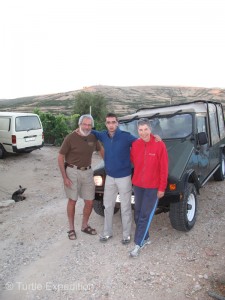
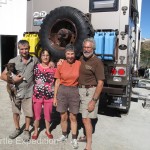
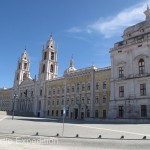
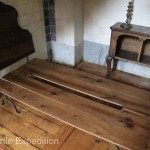
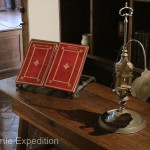
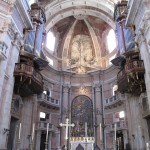
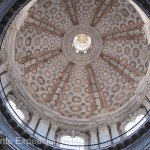
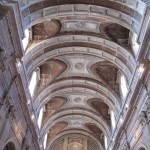
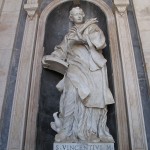
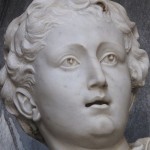
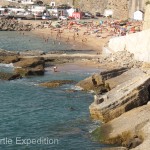
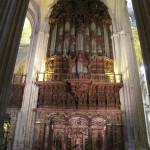
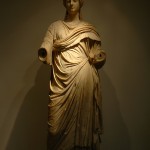





Leave a Comment